 Dorota Biczel
Dorota Biczel
As above, so below—two installations by the Colombian artist journey between the heavens and the earth.

Delcy Morelos, Cielo terrenal (Earthly Heaven), 2023. Courtesy Dia Art Foundation. Photo: Bill Jacobson Studio. © Delcy Morelos.
Delcy Morelos: El abrazo, organized by Alexis Lowry with Zuna Maza, Dia Chelsea, 537 West Twenty-Second Street, New York City,
through July 20, 2024
• • •
For the Uitoto, Indigenous peoples of the Colombian and Peruvian Amazon, the world is comprised of three interconnected parts: the sky-world, the water-world, and the ground-world. Only the shaman, endowed with superior knowledge and plant-forces, can traverse all these spaces, shape-shifting between different animal forms. In two hangar-like galleries at Dia Chelsea, Colombian artist and self-proclaimed bruja (witch) Delcy Morelos has created a pair of complementary installations that invite the viewer to undertake this circular shamanic journey from the ground to the heavens, and back.
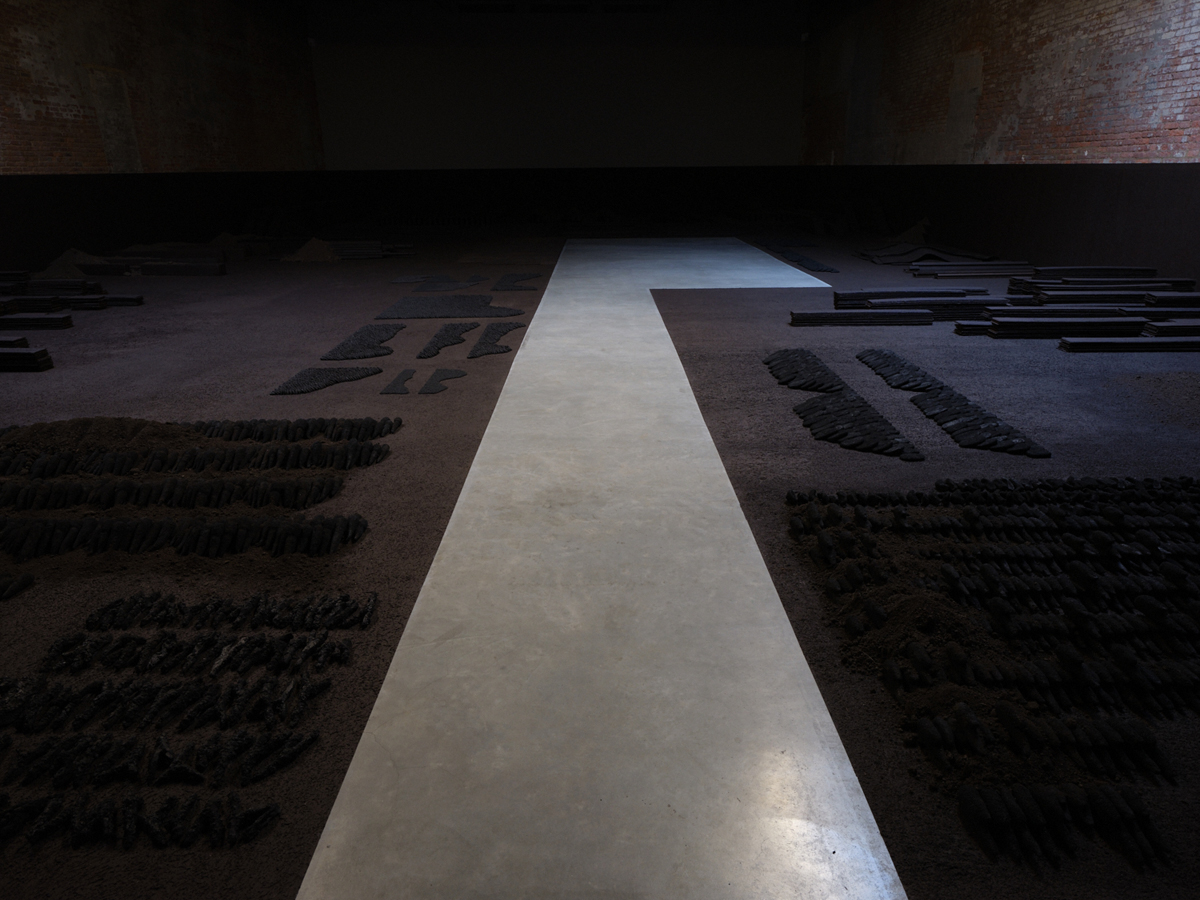
Delcy Morelos, Cielo terrenal (Earthly Heaven), 2023. Courtesy Dia Art Foundation. Photo: Bill Jacobson Studio. © Delcy Morelos.
The first installation, Cielo terrenal (Earthly Heaven), is dark, sprawling, and low, offering a descent into the remains of some long-lost world. Occupying the cavernous front gallery, it fills the space as much with stuff as with darkness. Almost the entire floor is encrusted with an even layer of richly textured, granular, near-black mud, which also creeps up the exposed-brick walls to about four feet: the high-water mark left by Hurricane Sandy in 2012, as the exhibition brochure notes. A narrow pathway leads to a rectangular viewing area that extends to the midpoint of the room. Scant artificial lighting throws into relief the small items neatly arranged into multiple parallel piles near the two front doorways and along the passage, right at the visitor’s feet. The rest of the installation is consumed by shadows.

Delcy Morelos: El abrazo, installation view. Courtesy Dia Art Foundation. Photo: Don Stahl. © Delcy Morelos. Pictured: Cielo terrenal (Earthly Heaven), 2023 (detail).
Overcome by tenebrosity and a faint smell of chai, I knelt to examine the distinctly organic forms that make up the illuminated trapezoid clusters near the entrances. The checklist explains they are fired ceramics. Yet, just by looking, it is hard to tell if these things were human-made or found in nature. Rarely larger than a fist, they could be the products of a gentle squeeze of the fingers just as well as of the bowels, as alluring as they are abject. Partially covered with crumbly soil, they might at first evoke the remnants of an ancient ritual covered by volcanic ash, or an excavated site of prehistoric animal extinction—these polysemic objects suggest other-than-human social organization. But the act of ordering them by kind also recalls the gesture of a forensic anthropologist trying to account for a killing; droppings morph into bullets, roots into bones. Dark and humid, Cielo terrenal is constituted of soil as fertile as it is funerary. I think of the installation as a “heaven in earth,” the dark and miraculous site of beginnings and ends, transformation and final rest. In that sense, the earth is the mother—the originary mother who has disappeared from the human realm and whose body is being suckled by the earth, as Uitoto believe.
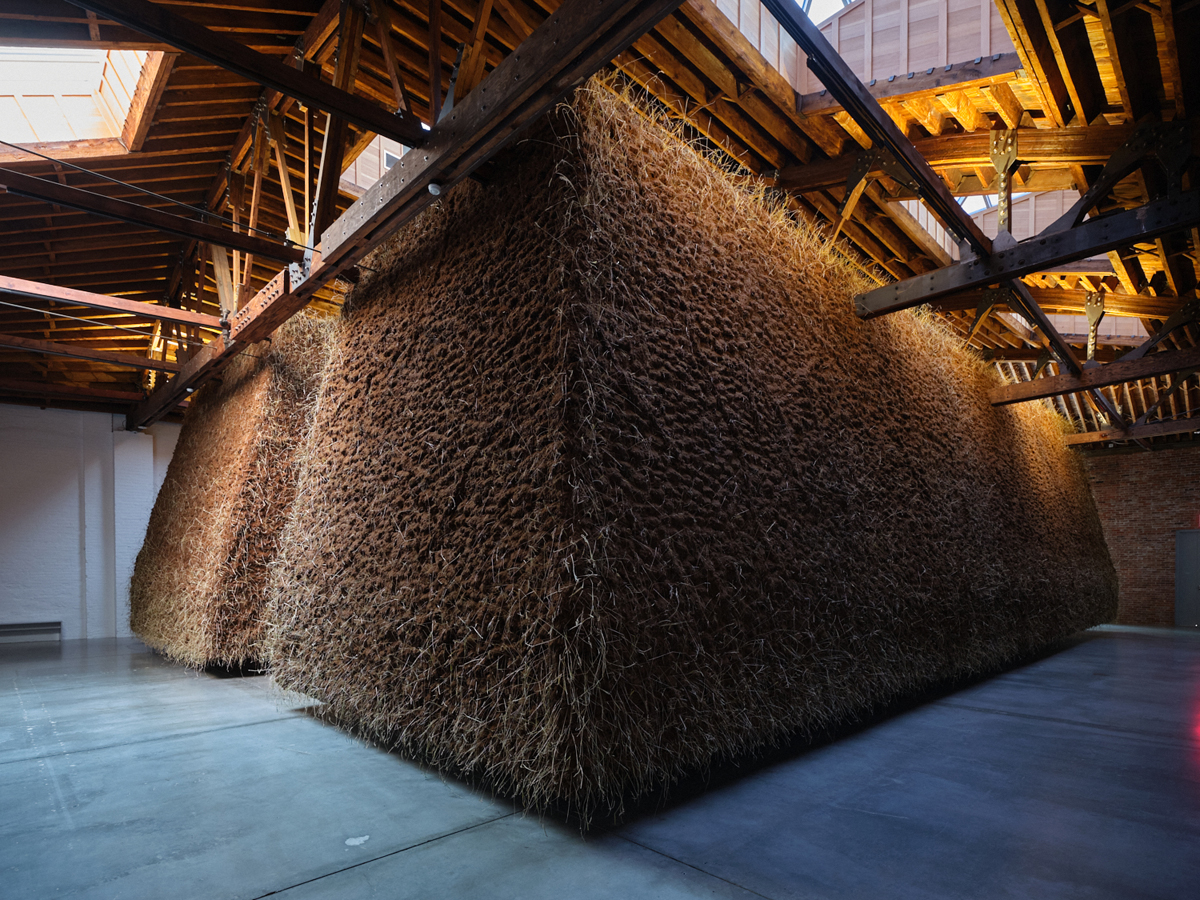
Delcy Morelos, El abrazo (The Embrace), 2023. Courtesy Dia Art Foundation. Photo: Bill Jacobson Studio. © Delcy Morelos.
In turn, upon entering the second gallery, El abrazo (The Embrace), which lends its title to the show, strains the gaze upward, toward the rafters and skylights. In contrast to the raw bricks of the previous space, here, the walls are painted stark white, an austere foil to the massive, pyramid-like construction of earth and grass levitating off the floor that occupies nearly the whole room. Only a narrow pathway along the perimeter allows for circumnavigation. The pyramid’s imposing monumentality softens upon inspection; it looks like the structure was built by stacking reddish clay handful by handful and then carefully inserting blades of grass into its lumpy surface. It seduces with its scent of a freshly cut meadow and the silence it engenders, muffling the racket of the city outside. Peering overhead, soft light seems to emanate from the mound’s interior through its top point, making the staggering structure appear to dissolve and lift off into the skies. It is as if someone had arduously piled up a ramp to heaven. One could ask, “How was it made?” and discover that, behind a veneer of ingenious engineering, there is a relatively basic cubic plywood support akin to a vertical garden. One could also not ask and simply accept a miracle.
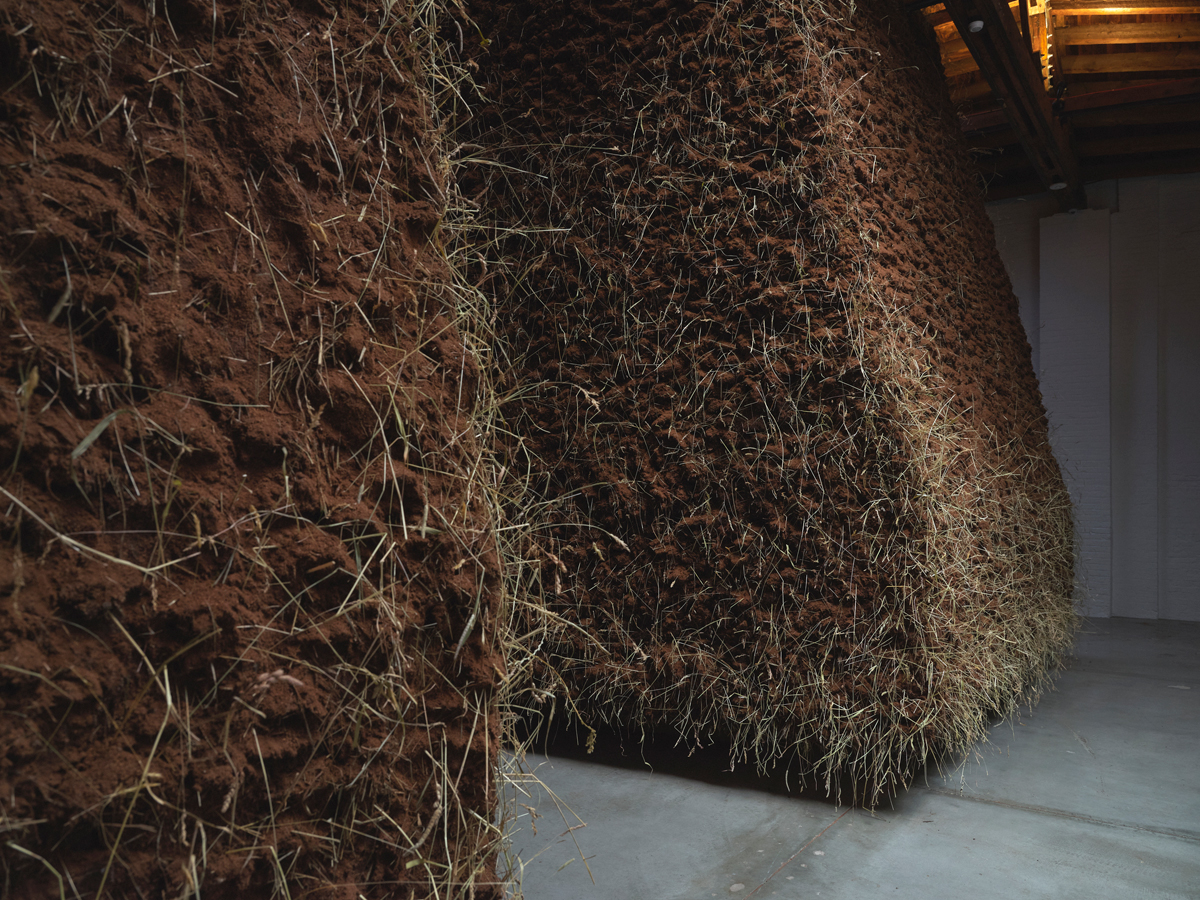
Delcy Morelos: El abrazo, installation view. Courtesy Dia Art Foundation. Photo: Don Stahl. © Delcy Morelos. Pictured: El abrazo (The Embrace), 2023 (detail).
What one asks herself about Morelos’s installations is crucial, given Dia’s mission and the institutional framing the curators chose to contextualize the artist’s practice for her first solo presentation in the United States. If these works really “evoke the industrialized logic of Minimalism,” as the exhibition brochure proposes, I was not able to tell. The industrial mode of production seems irrelevant to the constructions of mud, soil, and plant matter that I was able to discern in the dim lighting. Perhaps it was deployed somewhere in the shadows; however, I could not see. Similarly, the curatorial text likens El abrazo to “iconic Minimal sculptures” and cites as examples Dia-owned pieces including Richard Serra’s Torqued Ellipses (1996–97), Michael Heizer’s North, East, South, West (1967/2002), and Walter De Maria’s The New York Earth Room (1977). Finally, it suggests that “Morelos’s work may formally engage with the legacy of Land art, gesturing toward its vocabulary of geometric abstraction.” Here, the curators propose an additive historical reading, offering that Morelos “reorients considerations of land and site toward embodied forms of material and ecological knowledge.” Yet, to cast the artist as an inheritor of US Minimalism and Land art is incredibly reductive, at best, even if she—like many practitioners of her generation around the globe—is well versed in those idioms. Doing so provides an art-historical lineage legible in New York but eviscerates the politics that have undergirded Morelos’s work throughout her thirty-five-year career in Colombia.
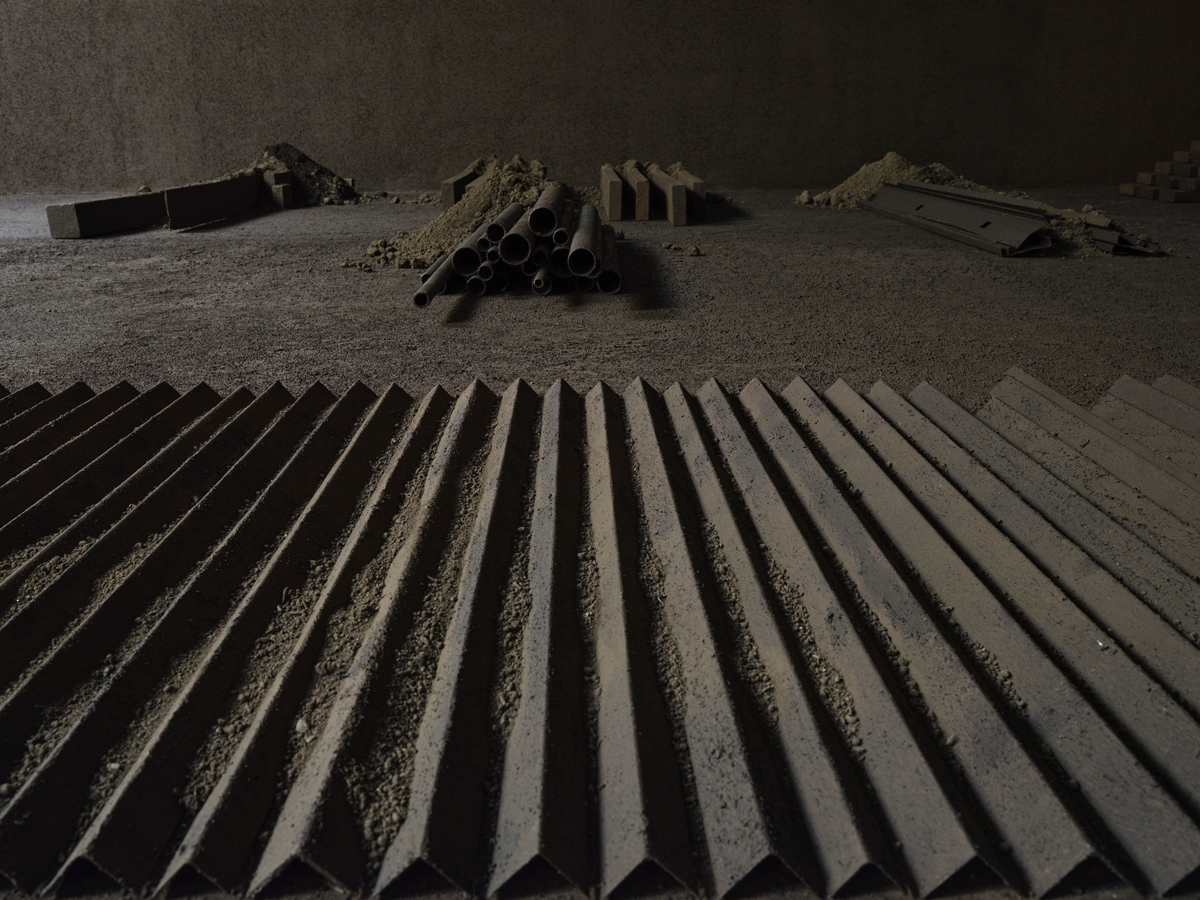
Delcy Morelos: El abrazo, installation view. Courtesy Dia Art Foundation. Photo: Don Stahl. © Delcy Morelos. Pictured: Cielo terrenal (Earthly Heaven), 2023 (detail).
Earth is not simply soil. Uitoto believe that differently colored people were created from differently colored clay. Morelos engaged with subjects of racialization and colorism as early as 1999, in the series of large-scale abstract paintings El color que soy (The color that I am), which discursively contend with Colombia’s historical attempts at “racial purification.” To be a “person of color” or to be Indigenous is not just to hold a special kind of traditional knowledge, including of the earth, as the curatorial text eagerly acknowledges. It is also to be subject to colonial violence and erasure. To that end, an installation like Cielo terrenal serves as a powerful reminder that “there is no such thing as a natural disaster,” as critics of the US government’s response to Hurricane Katrina have charged (and as Hurricane Sandy, intimated in Morelos’s work, also revealed). Disasters endured by the poor and dispossessed are the result of specific political and social interests working against them. And the Amazon that serves as the source of the artist’s inspiration is also the place where hundreds of Indigenous leaders are murdered annually because of their struggles against extractive capitalist projects.
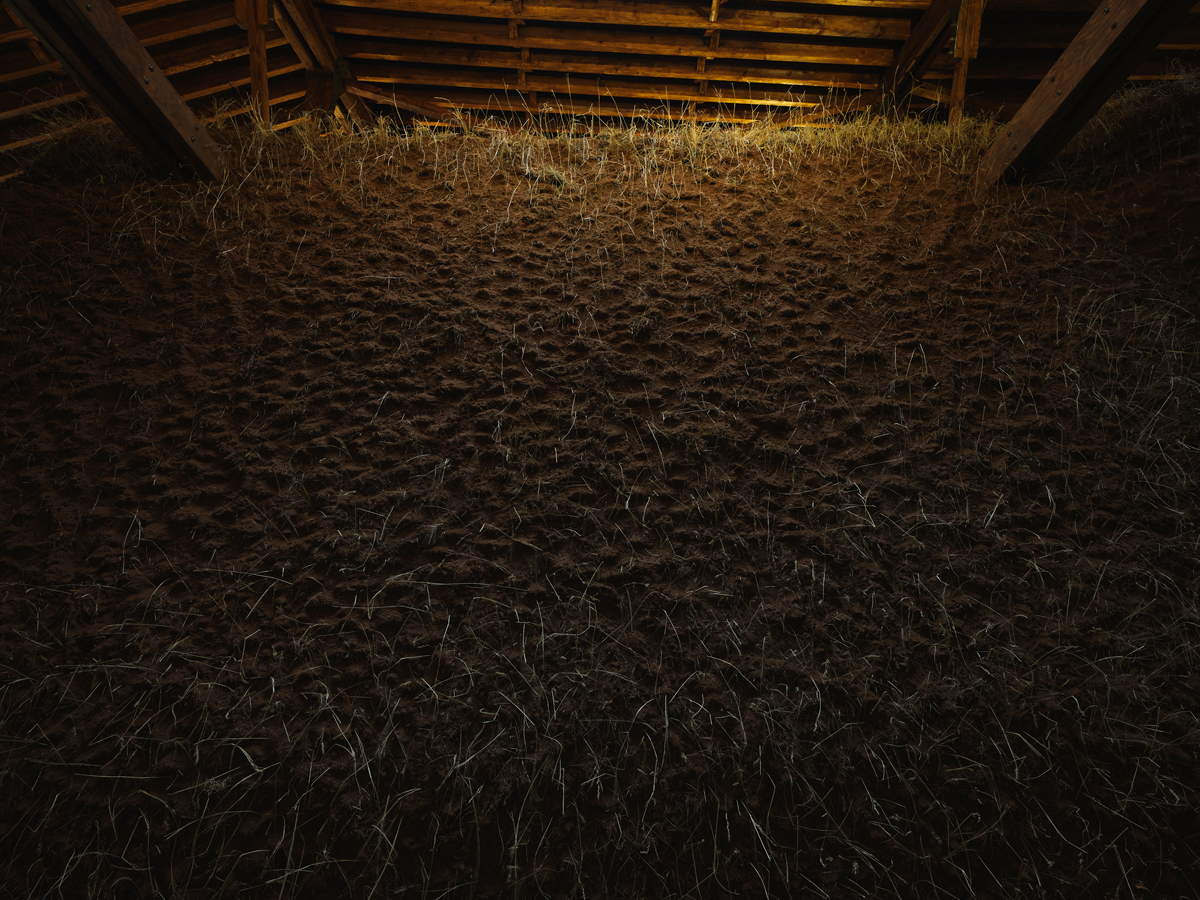
Delcy Morelos: El abrazo, installation view. Courtesy Dia Art Foundation. Photo: Don Stahl. © Delcy Morelos. Pictured: El abrazo (The Embrace), 2023 (detail).
In other words, Dia’s curatorial effort offers literal formal structures but denies either a catastrophe or a miracle: a glitch in perception that allows me to see otherwise—a glitch that opens my imagination. Despite this parochial framing, though, Morelos’s earth exudes a powerful agency all its own. I visited the exhibition on three occasions, at different times of day and in different weather, so that the capricious lighting conditions effected very different impressions, but her earth still compelled the same movement every time: down the abyssal Cielo terrenal, around the perimeter of the lofty El abrazo, up its sensuous slope into the sky above the rafters, and then down into blackness yet again. The heavens are only an intermittent and in-between place. Ultimately, we always descend back into earth. And that is a miracle in itself.
Dorota Biczel teaches art history and theory at Barnard College and occasionally curates exhibitions. She is currently working on a book, Precarious Subjects: Non-object-based Art, Migrations, and Political Transitions in Peru, 1968–1990.